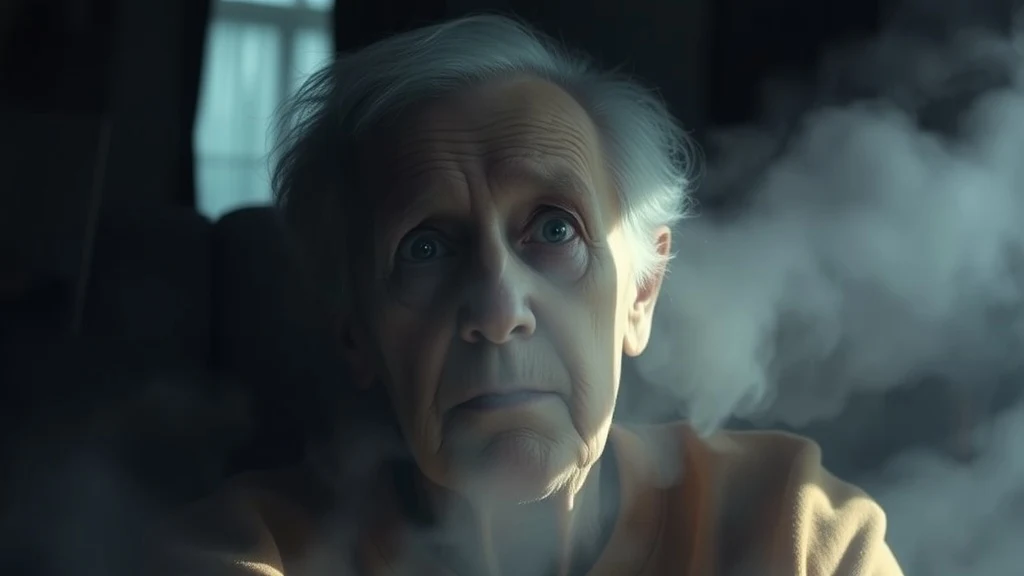5 Demographics of Dreamers Experiencing Partial Visibility
Want a Personalized Dream Interpretation?
Curious about how people like you interpret this dream symbol? Explore personalized interpretations tailored to your demographic. Get personalized insights for free!
Get Free Interpretation Now →Table of Contents
1. Individuals with Visual Impairments
For individuals with visual impairments, dreams of partial visibility can take on profound significance. These dreams may reflect the challenges, adaptations, and unique perspectives that shape their waking lives.
The obscurity or haziness in these dreams can symbolize the limitations imposed by their visual condition, evoking feelings of frustration or uncertainty. Yet, they may also represent resilience and the ability to navigate through obstacles.
Partial visibility dreams can provide insights into the ways these individuals have learned to compensate for their visual impairments. The use of sound, touch, and smell in these dreams may highlight the heightened sensory experiences that become essential for navigating the world.
Furthermore, dreams of partial visibility can reveal the emotional and psychological impact of living with visual impairments. The frustrations and anxieties associated with limited vision may manifest in these dreams, yet they can also showcase the strength and adaptability that these individuals possess.
By exploring the symbolism of partial visibility in dreams, individuals with visual impairments can gain a deeper understanding of their own experiences and the ways in which their dreams reflect their unique perspectives and challenges.
2. People Experiencing Cognitive Decline
Partial visibility is a common dream symbol that can be interpreted in many ways. When dreamed by people experiencing cognitive decline, this symbol may signify:

- Memory Loss: Partial visibility can represent the gradual loss of memories and the fading of once-familiar details.
- Confusion: The difficulty in seeing clearly may reflect the confusion and disorientation that often accompany cognitive decline.
- Isolation: The inability to fully perceive the surroundings can symbolize the sense of isolation and separation that individuals may feel as their cognitive abilities diminish.
- Symbolism: Partial visibility may also serve as a metaphor for the hidden or unknown aspects of oneself. In this context, it can represent the gradual uncovering of memories or the emergence of new perspectives as a result of the cognitive changes.
By understanding the potential meanings behind partial visibility in dreams, caregivers and loved ones can gain insights into the inner experiences of people experiencing cognitive decline. It can also provide a way to connect with them on a more meaningful level and offer support through this challenging journey.
3. Those with Psychological Conditions
Among individuals with psychological conditions, dreams symbolizing partial visibility often bear introspective significance.
Partial visibility represents psychological barriers or obstacles that hinder clear perception and understanding. For those with anxiety disorders, it may reflect feelings of uncertainty, confusion, and difficulty seeing a clear path forward.
In cases of depression, partial visibility can symbolize a sense of isolation and disconnection from the world, as if one is viewing life through a fog. Similarly, those with post-traumatic stress disorder may experience fragmented dreams with obscured details, reflecting the fragmented memories and difficulty processing traumatic events.
For individuals with personality disorders, such as borderline personality disorder, partial visibility may symbolize unstable self-perception and difficulty seeing oneself clearly. Additionally, it may represent the tendency to idealize or devalue others, obscuring their flaws or virtues.
Understanding the psychological symbolism behind partial visibility can provide valuable insights into the underlying emotional and cognitive processes at play. By exploring these dreams, individuals can gain a deeper understanding of their challenges, promote healing, and foster resilience.
4. Practitioners of Lucid Dreaming
Partial Visibility for Lucid Dreamers
For those who practice lucid dreaming, partial visibility can be a tantalizing sign that they are on the cusp of dream control. When vision is limited or fragmented, it creates an atmosphere of uncertainty and intrigue, signaling that the dreamer is navigating the threshold between reality and the depths of their subconscious.
This liminal state often presents challenges that can test a lucid dreamer's resolve. The limited visibility can obstruct clear decision-making and make it difficult to fully grasp the dream environment. Yet, it also holds the potential for profound discoveries. By embracing the unknown and exploring the boundaries of their imagination, lucid dreamers can uncover hidden truths and gain a deeper understanding of their own minds.
5. Individuals Exposed to Trauma
Dreams involving obscured or partial visibility can be particularly poignant for individuals who have experienced trauma.
-
Veiled Figures: These symbols may represent an inability to fully perceive or understand the details of the traumatic event. The veil suggests a desire to conceal or suppress the memory.
-
Dim Lighting: Darkness or dim lighting in dreams can evoke feelings of confusion, disorientation, and the inability to see clearly. This may reflect the cognitive distortions and emotional turmoil associated with trauma.
-
Blurred or Hazy Faces: Faces that are blurred or obscured can symbolize a sense of anonymity. This may stem from the need to protect the identity of the perpetrator or to avoid confronting the memories.
-
Concealed Objects: Items that are hidden or only partially visible can indicate a suppression of important details or emotions related to the trauma. These objects may represent symbols of the event or its impact on the individual.
-
One-Eyed Characters: Dreams featuring characters with only one visible eye can symbolize a distorted or limited perspective. This may reflect the tendency to focus on negative or selective aspects of the trauma.
Exploring the meaning of partial visibility in dreams can provide a window into the subconscious experiences and coping mechanisms of individuals who have faced trauma.
Back to interpretation of partial visibility

